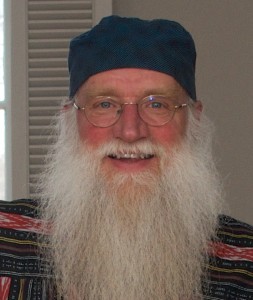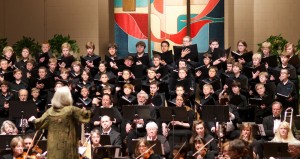When I was interviewed for this job, I was asked what repertoire I thought the orchestra could perform. I said, “We won’t be able to do Bartok, Concerto for Orchestra but there are so many other things we will be able to do.” This orchestra has grown so much and committed to such excellence that we are now ready for the Bartok.
Why is it such a difficult piece? Simply put, it is full of music we, as musicians, don’t play very often. We were all trained using Western European models – major and minor scales, symmetrical rhythms and phrases. Bartok asks us to go way beyond those perimeters. Yes, he was a huge fan of Bach so there are traditional harmonies in some places AND many fugues and fugatos. He also admired Schoenberg so there are whole-tone, pentatonic and artificial scales. But, most interestingly, Bartok was a great exponent and recorder of folk music. With a primitive Edison cylinder machine Bartok travelled all around Hungary and the surrounding countries, recording and then transcribing thousands of songs. We think of folk music as simple and easily singable but, if you’re from Hungary or the Czech Republic, you didn’t grow up singing the folk tunes we did. The music Bartok recorded became influential in everything he wrote. Those melodies, rhythms and harmonies were foreign to the Western European ear. BUT folk music of any kind is compelling because it speaks of the human experience. I think that is one of the many reasons why Bartok’s Concerto for Orchestra became an instant success.
When this piece was written Bartok felt his composing life was over. In 1943, weighing only 87 pounds, laying in a hospital bed suffering from symptoms of Leukemia which would eventually kill him, he was visited by the great conductor, Koussevitsky. He had been urged to do so by violinist, Joseph Szigeti and conductor, Fritz Reiner. All three icons of music loved Bartok’s music and did not want his creativity to end. They offered him a commission to write a work for the Boston Symphony. Initially he said “no” but an envelope with a sizeable down payment was left bedside and needing money desperately, Bartok accepted. Within 7 weeks, he had completed the masterpiece we all know and love.
So, with humility and LOTS of individual practice, we will perform Bartok’s Concerto on Nov. 16. I can’t wait!
https://thewso.org/wp-content/uploads/2015/05/wayzata-symphony-orchestra-mainLogo.png00Melissa Kalalhttps://thewso.org/wp-content/uploads/2015/05/wayzata-symphony-orchestra-mainLogo.pngMelissa Kalal2014-11-01 15:07:492015-06-12 15:11:28Never Say Never
I’m SO excited to be starting my 5th season conducting the WSO – and what a season it will be! We open with Osmo Vänskä playing Mozart’s Clarinet Concerto! Since my first exposure as a young clarinetist, I have welcomed every opportunity to delve deeper into this beloved masterpiece. To have Osmo Vänskä in the house to perform it is such a thrill. NOT TO BE MISSED!
Two other audience favorites round out the first program. Sibelius wrote the tone poem, Finlandia, at a time when Finland was under oppressive Russian rule. The hymn heard near the end of the piece became Finland’s national anthem and continues to be heard whenever a Finnish athlete wins Olympic gold.
Grieg’s Peer Gynt Suite contains some of the most recognizable tunes in the orchestral repertoire – Morning, Solveig’s Song, Anitra’s Dance, In the Hall of the Mountain King. WSO’s amazing musicians will bring their A-game to lift the music off the page.
See you on October 12th!
https://thewso.org/wp-content/uploads/2015/05/wayzata-symphony-orchestra-mainLogo.png00Melissa Kalalhttps://thewso.org/wp-content/uploads/2015/05/wayzata-symphony-orchestra-mainLogo.pngMelissa Kalal2014-09-20 15:14:202015-06-13 17:46:48Osmo Vänskä Joins the WSO!
Studying scores is a blast for me. But, studying a score that is brand new is even better. Holding a new score in your hands is a humbling thing, sort of like holding a new-born baby in your arms. You feel the wonder of a new creation and you feel the tremendous responsibility to try and nurture its path forward. The task is to figure out what is there, beyond notes, rhythms, articulations and dynamics. You try to get deeper. It takes a long time of study to begin to do that but when the desire is there, the time to do it becomes inconsequential.
Sea Creatures I have known of Daniel Kallman’s music since hearing a piece he wrote years ago, performed by Plymouth Music Series (now Vocalessence) under the direction of Philip Brunelle. Since then I have heard many more of his masterful creations, performed by MN Orchestra and many other ensembles. In 1997, I commissioned Dan to write a work for Halama Wind Octet. We premiered Sea Creatures at Wayzata Community Church and it was recorded by MPR. It is a fabulous piece that has been published by Boosey and Hawkes and is now performed all over the world.
Dan and I have talked for several years about trying to procure the funding for the full orchestration. With help from the MN State Arts Board, the dream has come to fruition. Sea Creatures is a six-movement work. Prior to each movement, there is narration concerning aspects of the earth’s oceans. The four middle movements – Dolphin, Puffer Fish, Moray Eel and Shark – are musical descriptions of those remarkable creatures of the sea.
Jabberwocky As part of the MSAB grant, Dan has also written a piece for the amazing MN Boychoir, directed by Mark Johnson. The piece, Jabberwocky, uses the text from Through the Looking Glass by Lewis Carroll. The text uses lots of portmanteaus. For example, “galumphing,” “frumious,” and “huffish.” Dan’s music brilliantly ‘paints’ the made-up words. I’m certain this piece, along with the fully orchestrated Sea Creatures, will get many future performances by ensembles nationally and internationally.
What a thrill to be the facilitators of their first performances!
https://thewso.org/wp-content/uploads/2015/05/wayzata-symphony-orchestra-mainLogo.png00Melissa Kalalhttps://thewso.org/wp-content/uploads/2015/05/wayzata-symphony-orchestra-mainLogo.pngMelissa Kalal2014-04-16 15:25:142015-06-13 17:16:55World Premieres by Daniel Kallman
Never Say Never
/in Wayzata Symphony Orchestra, WSO NewsMarlene’s Musings
November, 2014
Never say Never
Why is it such a difficult piece? Simply put, it is full of music we, as musicians, don’t play very often. We were all trained using Western European models – major and minor scales, symmetrical rhythms and phrases. Bartok asks us to go way beyond those perimeters. Yes, he was a huge fan of Bach so there are traditional harmonies in some places AND many fugues and fugatos. He also admired Schoenberg so there are whole-tone, pentatonic and artificial scales. But, most interestingly, Bartok was a great exponent and recorder of folk music. With a primitive Edison cylinder machine Bartok travelled all around Hungary and the surrounding countries, recording and then transcribing thousands of songs. We think of folk music as simple and easily singable but, if you’re from Hungary or the Czech Republic, you didn’t grow up singing the folk tunes we did. The music Bartok recorded became influential in everything he wrote. Those melodies, rhythms and harmonies were foreign to the Western European ear. BUT folk music of any kind is compelling because it speaks of the human experience. I think that is one of the many reasons why Bartok’s Concerto for Orchestra became an instant success.
When this piece was written Bartok felt his composing life was over. In 1943, weighing only 87 pounds, laying in a hospital bed suffering from symptoms of Leukemia which would eventually kill him, he was visited by the great conductor, Koussevitsky. He had been urged to do so by violinist, Joseph Szigeti and conductor, Fritz Reiner. All three icons of music loved Bartok’s music and did not want his creativity to end. They offered him a commission to write a work for the Boston Symphony. Initially he said “no” but an envelope with a sizeable down payment was left bedside and needing money desperately, Bartok accepted. Within 7 weeks, he had completed the masterpiece we all know and love.
So, with humility and LOTS of individual practice, we will perform Bartok’s Concerto on Nov. 16. I can’t wait!
Osmo Vänskä Joins the WSO!
/in Amazing Guest Artists, Wayzata Symphony Orchestra, WSO NewsMarlene’s Musings
September, 2014
Two other audience favorites round out the first program. Sibelius wrote the tone poem, Finlandia, at a time when Finland was under oppressive Russian rule. The hymn heard near the end of the piece became Finland’s national anthem and continues to be heard whenever a Finnish athlete wins Olympic gold.
Grieg’s Peer Gynt Suite contains some of the most recognizable tunes in the orchestral repertoire – Morning, Solveig’s Song, Anitra’s Dance, In the Hall of the Mountain King. WSO’s amazing musicians will bring their A-game to lift the music off the page.
See you on October 12th!
World Premieres by Daniel Kallman
/in Amazing Guest Artists, Family Concert, Wayzata Symphony Orchestra, WSO NewsMarlene’s Musings
April, 2014
Studying scores is a blast for me. But, studying a score that is brand new is even better. Holding a new score in your hands is a humbling thing, sort of like holding a new-born baby in your arms. You feel the wonder of a new creation and you feel the tremendous responsibility to try and nurture its path forward. The task is to figure out what is there, beyond notes, rhythms, articulations and dynamics. You try to get deeper. It takes a long time of study to begin to do that but when the desire is there, the time to do it becomes inconsequential.
Sea Creatures
 I have known of Daniel Kallman’s music since hearing a piece he wrote years ago, performed by Plymouth Music Series (now Vocalessence) under the direction of Philip Brunelle. Since then I have heard many more of his masterful creations, performed by MN Orchestra and many other ensembles. In 1997, I commissioned Dan to write a work for Halama Wind Octet. We premiered Sea Creatures at Wayzata Community Church and it was recorded by MPR. It is a fabulous piece that has been published by Boosey and Hawkes and is now performed all over the world.
I have known of Daniel Kallman’s music since hearing a piece he wrote years ago, performed by Plymouth Music Series (now Vocalessence) under the direction of Philip Brunelle. Since then I have heard many more of his masterful creations, performed by MN Orchestra and many other ensembles. In 1997, I commissioned Dan to write a work for Halama Wind Octet. We premiered Sea Creatures at Wayzata Community Church and it was recorded by MPR. It is a fabulous piece that has been published by Boosey and Hawkes and is now performed all over the world.
Dan and I have talked for several years about trying to procure the funding for the full orchestration. With help from the MN State Arts Board, the dream has come to fruition. Sea Creatures is a six-movement work. Prior to each movement, there is narration concerning aspects of the earth’s oceans. The four middle movements – Dolphin, Puffer Fish, Moray Eel and Shark – are musical descriptions of those remarkable creatures of the sea.
Jabberwocky
 As part of the MSAB grant, Dan has also written a piece for the amazing MN Boychoir, directed by Mark Johnson. The piece, Jabberwocky, uses the text from Through the Looking Glass by Lewis Carroll. The text uses lots of portmanteaus. For example, “galumphing,” “frumious,” and “huffish.” Dan’s music brilliantly ‘paints’ the made-up words. I’m certain this piece, along with the fully orchestrated Sea Creatures, will get many future performances by ensembles nationally and internationally.
As part of the MSAB grant, Dan has also written a piece for the amazing MN Boychoir, directed by Mark Johnson. The piece, Jabberwocky, uses the text from Through the Looking Glass by Lewis Carroll. The text uses lots of portmanteaus. For example, “galumphing,” “frumious,” and “huffish.” Dan’s music brilliantly ‘paints’ the made-up words. I’m certain this piece, along with the fully orchestrated Sea Creatures, will get many future performances by ensembles nationally and internationally.
What a thrill to be the facilitators of their first performances!